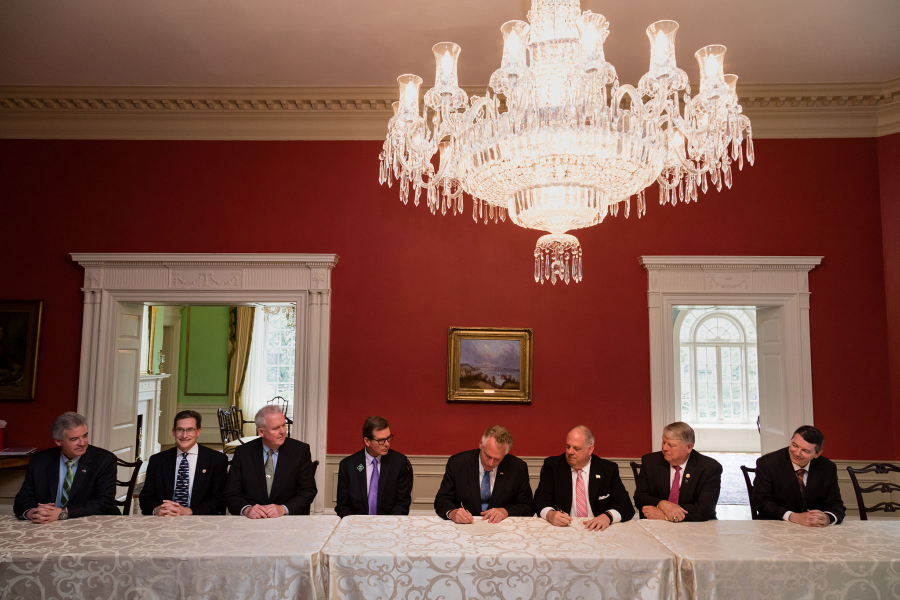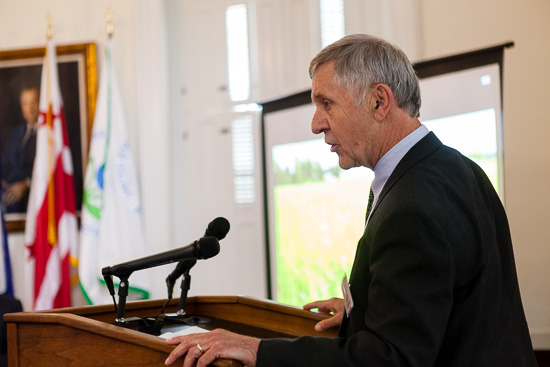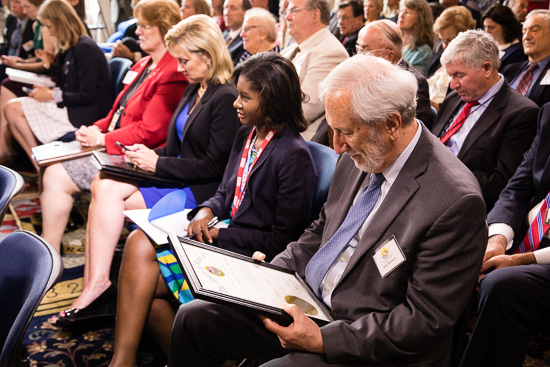Chesapeake Executive Council signs resolution in support of Bay Program partnership
Maryland Governor Larry Hogan elected chair of Executive Council

Today, at the annual meeting of the Chesapeake Executive Council, representatives from the six Chesapeake Bay watershed states, the District of Columbia and the Chesapeake Bay Commission signed a resolution in support of the Chesapeake Bay Program partnership.
The resolution calls upon the President and United States Congress to continue the current level of federal support for the Chesapeake Bay Program, including the coordinating role of the U.S. Environmental Protection Agency (EPA) Chesapeake Bay Program. It also calls for science, monitoring, modeling and restoration to continue with the full participation of local, state and federal agencies and private sector partners as appropriate.
Established in 1983, the Chesapeake Executive Council is responsible for guiding the Chesapeake Bay Program’s policy agenda and setting conservation and restoration goals. Its members include the governors of Delaware, Maryland, New York, Pennsylvania, Virginia and West Virginia, the Mayor of the District of Columbia, the Chair of the Chesapeake Bay Commission and the Administrator of the EPA on behalf of the federal government. Because of advocacy statements contained within the resolution, federal law and practice prohibited the EPA from signing.


Members of the Executive Council also elected Maryland Governor Larry Hogan as the new Chair. Governor Hogan succeeds Virginia Governor Terry McAuliffe, who became chair on January 1, 2015.
Under Governor McAuliffe’s two consecutive terms as Chair, the Executive Council announced the release of 25 management strategies outlining how the Bay Program will achieve the goals and outcomes of the Chesapeake Bay Watershed Agreement. Governor McAuliffe also oversaw last year’s landmark funding agreement between EPA, the U.S. Department of Agriculture and the Commonwealth of Pennsylvania to commit an additional $28 million dollars to help reduce nutrient pollution in the state.
“It has been my honor to serve as Chairman of the Chesapeake Bay Program’s Executive Council for the last two and a half years” said Governor McAuliffe. “We are seeing real, measurable progress in water quality and habitat in the Chesapeake Bay and its tributaries which bodes well for the future of the ecology of the bay and the significant economic activity it supports. It is time to forcefully build on our success and continue to make the necessary state and federal investments in restoration, science and public engagement that have been the hallmark of this partnership.”
Executive Council members also heard from the local government, citizen and scientific communities from the council’s three advisory committees—the Citizens Advisory Committee, the Local Government Advisory Committee and the Science and Technical Advisory Committee—who voiced their support for the partnership.
"Now more than ever, we must work together to protect and restore the Chesapeake Bay,” said Governor Hogan. “Our administration has invested more than $3 billion in Bay restoration efforts, fully funded the Chesapeake and Atlantic Coastal Bays Trust Fund and Program Open Space, and expanded innovative partnerships to preserve this priceless resource and national treasure we call home. As the newly elected chair of the Executive Council, I pledge to be a fierce advocate for greater environmental progress and deeper collaboration upstream and throughout the Bay watershed."
Learn more about the 2017 Executive Council Meeting.
To view more photos, visit the Chesapeake Bay Program's Flickr page.

Comments
There are no comments.
Thank you!
Your comment has been received. Before it can be published, the comment will be reviewed by our team to ensure it adheres with our rules of engagement.
Back to recent stories